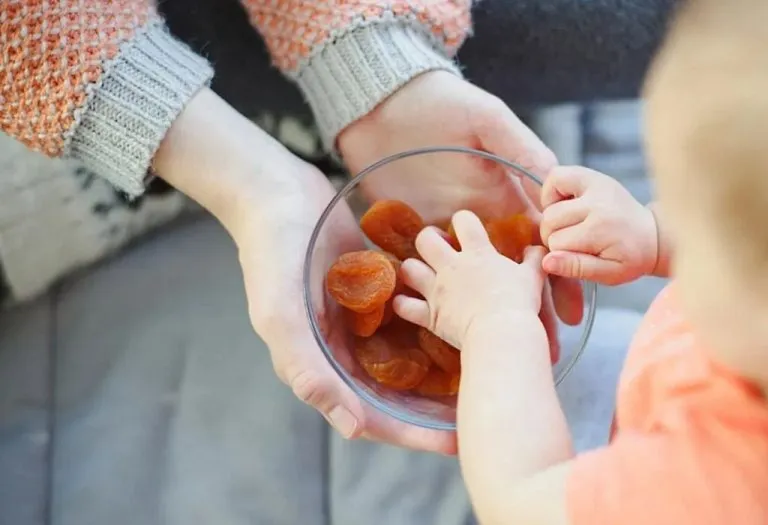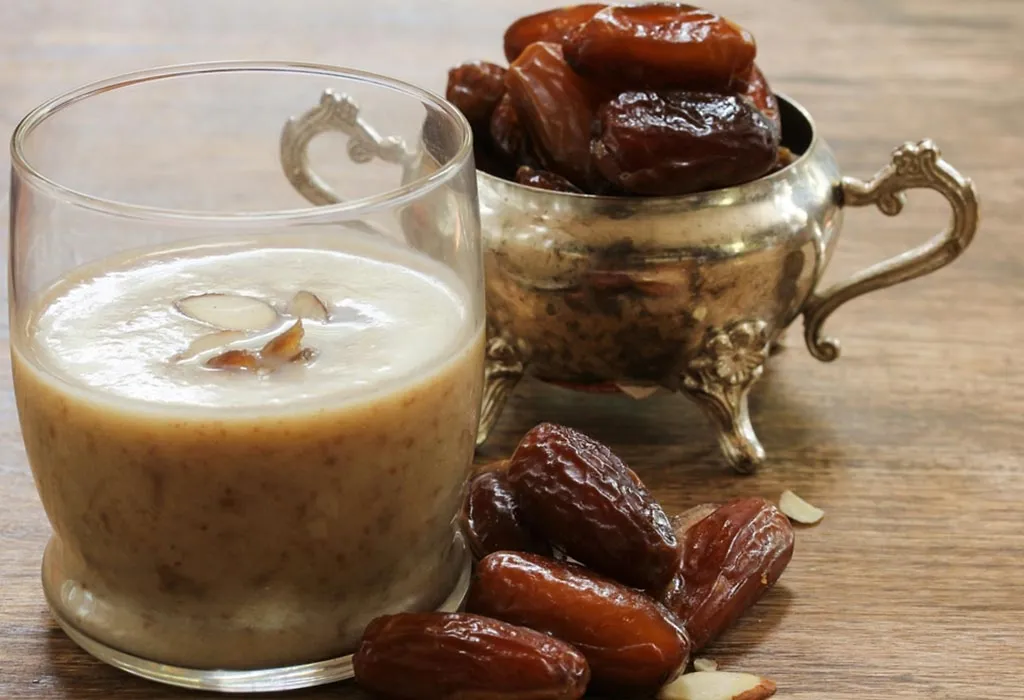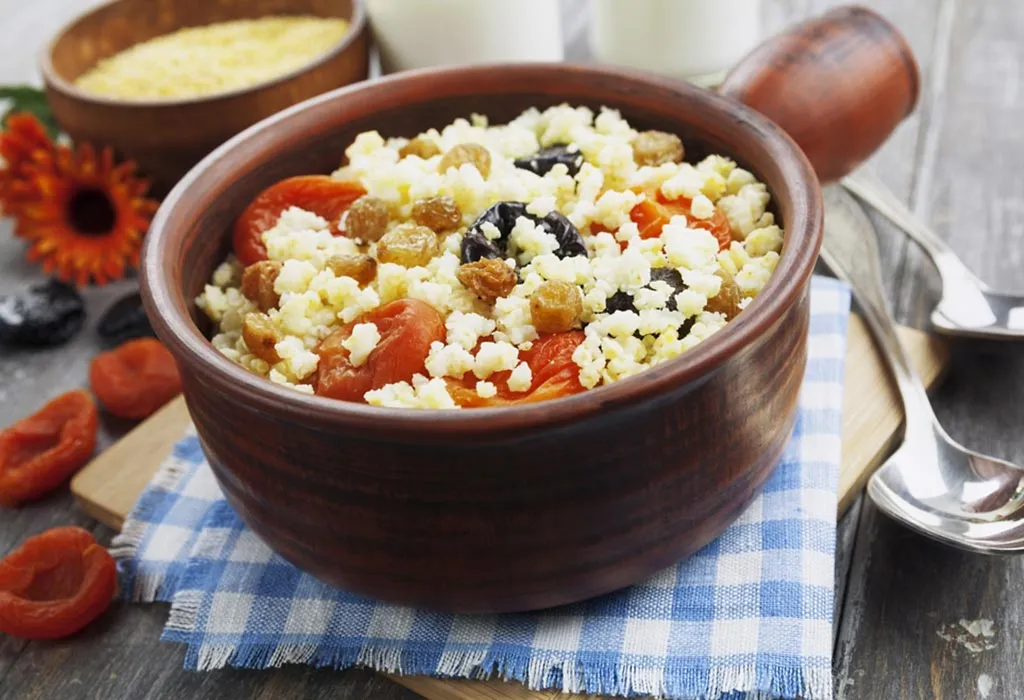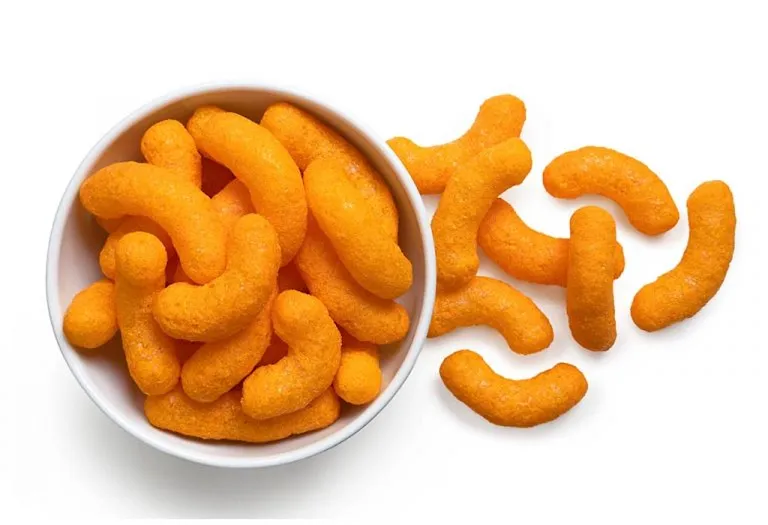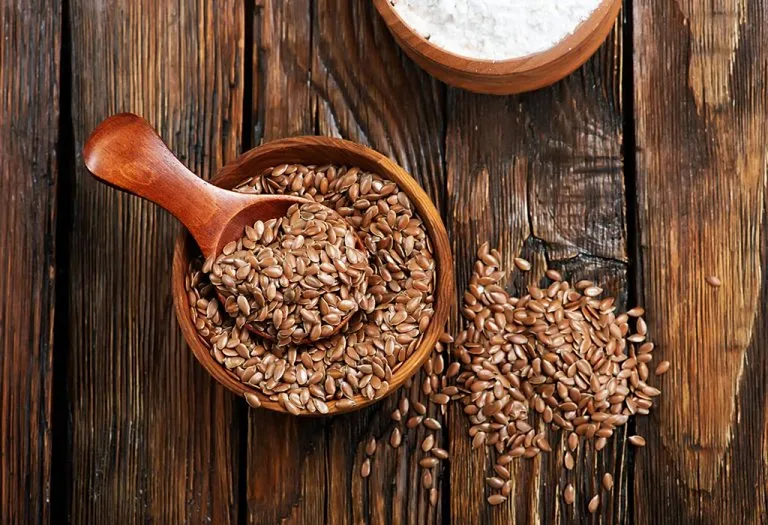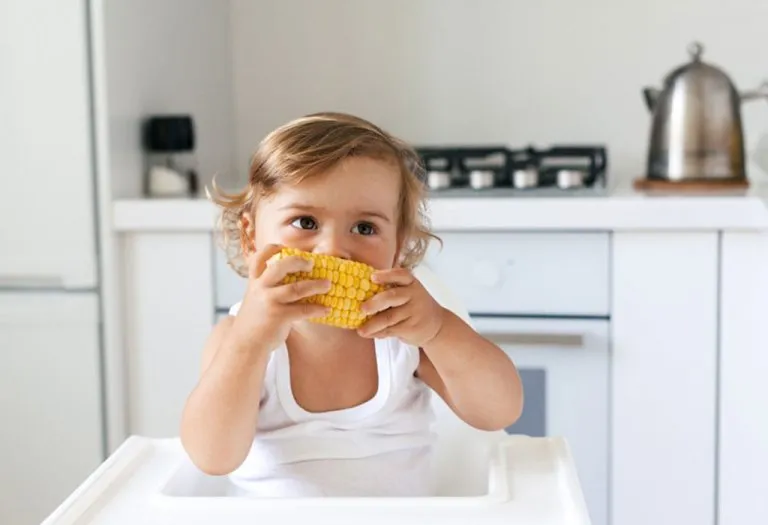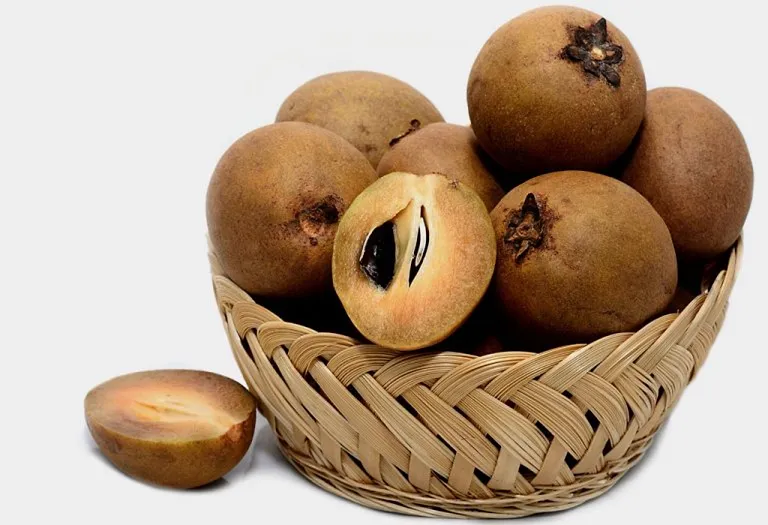Dry Fruits for Babies – When to Introduce and Health Benefits
In addition to breast milk or formula milk, you will want to introduce certain solid foods to your baby once they are ready for solids. But being a new mom, of course, you will think twice (as you should) before introducing any new food to them. Babies with tiny tummies and a delicate digestive system don’t eat much, so it is essential that whatever food they are given is nutritious and safe for them. Dry fruits are a healthy option as they contain many nutrients, but before including them in your baby’s diet, you must remember certain things. Read on to know whether dry fruits are safe for babies and, if so, when you can introduce them into their diet.
What Are Dry or Dried Fruits?
Dried fruits are essentially fresh fruits that have been dried. Fresh fruits are dehydrated (their water content is removed) by conventional sun drying or dehydrators. However, the nutritional content of these fruits remains the same even after dehydration. Dry fruits are popular as they can be stored longer than fresh fruits (1).
Are Dry Fruits Safe for Infants?
Dried or dry fruits are safe for babies and infants and can offer them many nutrients. You can feed dried fruits by soaking them in milk or water, but only when your baby turns 1. You must not choose dry fruits coated with sugar, which can lead to cavities and tooth decay (2). Furthermore, when introducing dried fruits to your baby, you can soak them in water to soften them before giving them to your baby. While giving almonds to your little one, peel their skin to avoid irritation to your baby’s throat. Remember, dried fruits should only be given after soaking in milk or water once a baby turns one year old.
When to Give Dry Fruits to Babies?
If you plan to introduce dried fruits into your baby’s diet, the ideal time would be after they are 6 months old (3). By this time, you will have already introduced finger foods and other soft foods to them. Around this time, you can also slowly add dried fruits to their diet. Since dry fruits are heavy on the digestive system, it is best that you give your baby some time to get used to other light solid foods first before giving them dry fruits.
You will also need to consider the possibility of allergies. Some babies are allergic to certain dry fruits. So try the 3-day rule (4) and look for signs of allergy in your baby. If you notice any signs of allergy in them after introducing a particularly dried fruit, stop giving it immediately. Note: Do not introduce dried fruits to your baby before they turn a year old.
Health Benefits of Dried Fruits for Babies
Dry fruits offer many benefits to babies that can help them grow and develop properly. Mentioned below are some benefits of dry fruits for a child.
1. Prevent Anaemia
Dried fruits are a rich source of iron, promoting haemoglobin levels in the blood. And good haemoglobin levels prevent the risk of anaemia in babies (5).
2. Provide Energy
Dry fruits, a rich source of fibre, protein, zinc, iron, and other minerals, can give your baby energy (6). Including dried fruits in your baby’s diet will keep them energetic and healthy.
3. Prevent Constipation
Dry fruits contain adequate fibre to aid babies’ bowel movement and help prevent constipation (7).
4. Promote Digestive Health
Dried fruits contain a lot of probiotics or good bacteria, which can keep your baby’s digestive system healthy. Probiotics will help develop your baby’s digestive system and aid in the digestion of food (7).
5. Promote Bone and Eye Health
Dry fruits are rich in Vitamin A and calcium. Vitamin A can strengthen and help maintain a healthy vision in your baby (8), and calcium can aid in developing and maintaining their bones (9).
6. Aid Brain Development
The omega-3 fatty acids in dry fruits and nuts like walnuts can help babies’ brain development (10).
7. Improves Cardiovascular Health
Consuming dry fruits has been shown to improve cardiovascular health, reducing the risk of cardiovascular diseases. It also lowers lipid concentrations, blood glucose, and blood pressure (11).
Some Health Risks Associated With Giving Dry Fruits to Infants
While dry fruits are nutritious and have many health benefits, they also pose some risks, especially if fed to an infant who is still developing. Here are some of the potential health risks of feeding dry fruits to babies:
1. Unhealthy Weight Gain
Dry fruits contain natural sugars like fructose and glucose (12), which can lead to unhealthy weight gain. This is because dry fruits are smaller due to dehydration, leading to skewed portion control.
2. Allergic Reaction
Dry fruits like raisins are often preserved using sulphites, which can cause an allergic reaction (13).
3. Toxic Contamination
If dry fruits are not stored correctly, it can give rise to the formation of harmful fungi, which could release mycotoxins that are harmful to the baby and, in rare cases, even fatal (14).
4. Tooth Decay and Cavities
Certain fruits are dehydrated and candied with sugar to form dry fruits. Not only do these candied fruits make babies averse to fresh fruit, but excessive consumption of them could lead to a rise in dental flora, leading to cavities and tooth decay (2).
5. Gastrointestinal Discomfort
Dry fruits are very fibrous, so if the portion you feed your baby is uncontrolled, it could lead to gastric unease like constipation, bloating, diarrhoea, and gas (15).
Precautions to Take While Feeding Dried Fruits to Your Baby
Before you feed dry fruits to your baby, there are specific steps you should take to ensure they are safe to consume for your little one. Here are a few precautions you should take before feeding dry fruits to your infant:
- Store dry fruits in an airtight container away from direct sunlight.
- Buy organic dry fruits from a trusted seller.
- Check how your dry fruits are dried. It is preferable to purchase and feed shade-dried dry fruits to babies.
- Opt for semi-moist dry fruits – these are easier for a baby to consume.
- Check for potential allergies dry fruits can cause. Feed your baby a tiny portion and follow the three-day rule to check for an allergic reaction. Proceed to feed them the dried fruit only if they show no signs of allergy.
- Portion control is key! Feed your baby regulated amounts of dried fruits to avoid potential health risks.
- If you feed dry fruits to babies under a year old, ensure they are cooked, mashed, or pureed to avoid digestive or choking hazards. Cut the dried fruits into bite-size pieces for older babies to make them easy to consume.
Dry Fruit Powder Recipe For Babies
For babies under one-year-old, a dry fruit powder is the best way to introduce dried fruits into their diet. They can be mixed with milk, purees, or porridge and fed to your baby. Here are some delicious and healthy dry fruit powder recipes for your baby:
1. Nut Powder Recipe for Weight Gain
Ingredients
- 1 cup almond
- ½ cup cashew
- 2 tbsp pistachios
- 2 tbsp pumpkin seeds
- 3 pods cardamom
- ¼ tsp saffron
Method
-
Roast the almond in a pan until it turns crunchy. Keep aside.
-
Now, roast the cashews till they turn slightly crunchy and keep aside.
-
Add the pistachios and pumpkin seeds to the pan and roast till it turns crisp.
-
Cool all ingredients completely, then transfer them to the mixer jar.
-
Add the pods of cardamom and saffron.
-
Pulse and grind the mix to a fine powder.
-
Store this protein-rich nut powder in an airtight container and use it within a month.
2. Dry Fruit Powder For Milk, Porridge, and Purees
Ingredients
- 1/4 Cup Almond
- 1/4 Cup walnut
- 1/4 Cup pistachios
- 1/4 Cup cashew
- 1/4 Cup pumpkin seed
- 1/2 Teaspoon dry ginger powder
- 2 Teaspoon brown sugar
- 3-4 Green cardamom
- 1/4 tbsp powdered nutmeg
- Few strands of saffron(Optional)
Method
- Dry roast the almonds, walnuts, pistachios, cashews, and pumpkin seeds in a pan, one at a time.
- Ensure you don’t roast them too long, as they may leach their oils.
- Once roasted, keep them aside to cool.
- Once cooled, put all the nuts and pumpkin seeds in a zip-lock bag, then use a rolling pin to smash them until they turn into bite-sized pieces.
- Add the crushed nuts into a mixer, along with the remaining ingredients.
- Pulse it in the blender for not more than 10-12 seconds.
- Use a sieve to separate the coarse and rough pieces.
- Add the coarse pieces to the blender and pulse again for 10 seconds. Sieve again.
- Cool the mixture and store it in an airtight container.
- Add to milk, purees, or porridge and feed to your baby.
Delicious Dry Fruit Recipes for Your Baby
Here are some simple recipes that you can try to incorporate dry fruits into your baby’s diet.
1. Date Fruit and Fig Milk
Here is a simple recipe for date fruit and fig milk. But remember, give this to your baby only after they are a year old.
Ingredients
- Dates – 1-2
- Figs – 2
- Milk – 1 cup
- Water
Recipe
- Boil the dates and figs in milk or water.
- Strain the milk through a fine sieve in a glass and give it to your baby.
2. Baby Cereal With Dry Fruit Puree
This simple breakfast recipe can add flavour to your baby’s breakfast cereal.
Ingredients
- Bananas – 1
- Apricots – 2
- Peaches – 2
- Applesauce – 1/2 cup
- Prunes – 2
- Baby cereal (as required)
- Milk – 3 cups
Recipe
- Puree the fruits, dry fruits, and applesauce together.
- You can make the consistency of the puree thinner by adding some milk to it.
- Pour this over baby cereal and serve.
Note: The recipes’ images contain coarse nuts and dry fruits. Be sure to blend them properly to prevent your baby from choking. Also, introduce these recipes once your baby turns one year old and after checking with your baby’s paediatrician.
FAQs
1. Which dried fruits are mostly recommended for babies?
The best-dried fruits for babies include almonds, walnuts, cashews, and raisins. They all contain nutrients and antioxidants that are essential for your baby’s physical and mental development.
2. Can you give pista (pistachio) to your baby?
Pistachios are safe to feed to your baby. It is a rich source of fibre, zinc, and fatty acids that the body requires to boost immunity, improve brain development, and aid digestion.
3. Are dried fruits better for infants than fresh fruits?
While fresh produce of any kind is normally better, dried fruit retains all of the nutrition that a fresh fruit has but less of the weight and calories. However, before feeding your baby, the potential risks of dry fruit consumption must be considered.
Dry fruits are packed with nutrients that are beneficial for your baby. Introducing them to your little one at the right time and in the right way can allow them to enjoy dry fruits’ flavour and health benefits thoroughly. However, consult your baby’s paediatrician before introducing them to your baby’s diet. If the baby’s doctor gives the go-ahead, introduce one dry fruit at a time and watch out for allergies in your baby.
References/Resources:
1. Drying Fruits and Vegetables; Ohio State University; https://ohioline.osu.edu/factsheet/HYG-5347
2. Sadler M. J.; Dried fruit and dental health; International journal of food sciences and nutrition; https://pubmed.ncbi.nlm.nih.gov/27415591/; 2016
3. Vegetarian and vegan feeding guide for babies; Pregnancy, Birth, and Baby; https://www.pregnancybirthbaby.org.au/vegetarian-and-vegan-feeding-guide-for-babies
4. When, What, and How to Introduce Solid Foods; Center for Disease Control and Prevention; https://www.cdc.gov/nutrition/infantandtoddlernutrition/foods-and-drinks/when-to-introduce-solid-foods.html
5. Hemoglobin and Functions of Iron; UCSF Health; https://www.ucsfhealth.org/education/hemoglobin-and-functions-of-iron
6. Khan Sohaib, A., Qurrat-ul-Ain, et al.; Dry Fruits and Diabetes Mellitus; International Journal of Medical Research &Health Sciences; https://www.ijmrhs.com/medical-research/dry-fruits-and-diabetes-mellitus.pdf ; 2017
7. Chang, Sui Kiat & Alasalvar, Cesarettin & Shahidi, Fereidoon; Review of dried fruits: Phytochemicals, antioxidant efficacies, and health benefits; Journal of Functional Foods; https://www.researchgate.net/publication/291015880_Review_of_dried_fruits_Phytochemicals_antioxidant_efficacies_and_health_benefits/citation/download; 2016
8. What is Vitamin A Deficiency; American Academy of Opthalmology; https://www.aao.org/eye-health/diseases/vitamin-deficiency
9. Wallace T. C.; Dried Plums, Prunes and Bone Health: A Comprehensive Review; Nutrients; https://www.ncbi.nlm.nih.gov/pmc/articles/PMC5409740/; 2017
10. Dighriri, I. M., Alsubaie, A. M., Hakami, F. M., et al.; Effects of Omega-3 Polyunsaturated Fatty Acids on Brain Functions: A Systematic Review; Cureus; https://www.ncbi.nlm.nih.gov/pmc/articles/PMC9641984/; 2022
11. Alasalvar, C., Chang, S. K., Kris-Etherton, P. M., Sullivan, et al.; Dried Fruits: Bioactives, Effects on Gut Microbiota, and Possible Health Benefits-An Update; Nutrients; https://www.ncbi.nlm.nih.gov/pmc/articles/PMC10097306/; 2023
12. Chiavaroli, L., Cheung, A., Ayoub-Charette, S., et al.; Important food sources of fructose-containing sugars and adiposity: A systematic review and meta-analysis of controlled feeding trials; The American Journal of Clinical Nutrition; https://www.sciencedirect.com/science/article/pii/S0002916523040996; 2023
13. Sulfite Sensitivity Frequently Asked Questions; Australian Society of Clinical Immunology and Allergy; https://www.allergy.org.au/patients/other-allergy/sulfite-sensitivity-faq
14. Mycotoxins; World Health Organisation; https://www.who.int/news-room/fact-sheets/detail/mycotoxins
15. Ioniță-Mîndrican, C. B., Ziani, K.,et al.; Therapeutic Benefits and Dietary Restrictions of Fiber Intake: A State of the Art Review; Nutrients; https://www.ncbi.nlm.nih.gov/pmc/articles/PMC9268622/; 2022
Also Read:
Fennel for Infants
Introducing Nuts to a Baby
Consuming Tofu for Babies
Makhana (Lotus Seeds) for Infants
Was This Article Helpful?
Parenting is a huge responsibility, for you as a caregiver, but also for us as a parenting content platform. We understand that and take our responsibility of creating credible content seriously. FirstCry Parenting articles are written and published only after extensive research using factually sound references to deliver quality content that is accurate, validated by experts, and completely reliable. To understand how we go about creating content that is credible, read our editorial policy here.





